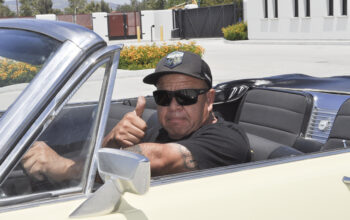The dust-covered planes of what was once an all-male college that focused solely on agriculture have come a long way in 67 years.
From becoming co-ed to building a new state-of-the art library and planning for the expansion and modernization of new classrooms, the essence of Clarence W. Pierce School of Agriculture, now known as Pierce College has stayed the same.
Dr. Leland Shapiro, Agricultural Department chair, remembers the Quonset hut that served as the first and only classroom and the mission of Pierce when it first opened in 1947.
Surprisingly, when medical doctor Clarence Pierce first opened what is now known as Pierce, it was not a college, but a part of the Los Angeles Unified School District as grades 13 and 14, according to Shapiro.
WWII had just ended and the school had three main goals. The first was to train all the veterans who had returned in a field that would allow them to work and provide for themselves.
There were 52 full-time male students that first attended Pierce in 1947 but in the early 50’s, the school became co-ed, and the females were trained to become secretaries. By the 60’s, the mostly-male staff was made up of former Marines, according to Shapiro.
“They [were] gentlemen,” Shapiro said. “So when a lady walked into a classroom, even if she was a student or not, all the men stood up until she sat down, and they would stand by her chair waiting for her to sit down.”
By 1948, the Administration building became the first permanent structure on campus with plans of dairy unit that was functional until the 1990s.
Students before 1951 were faced with the same predicament that current students are in: no cafeteria.
The year 1951 also brought a field house and the completion of the 10-dorm system, according to old Roundup articles.
The school, however, is continuing with its second goal of preparing students to transfer to a four-year university long after its first class graduated.
Pierce is also known for its strong veterinary program. Of the 205 students who applied to veterinary school, all have been accepted and have gone on to become veterinarians, according to Shapiro.
“I credit my students the most because you have to work really hard,” Shapiro said.
In recent years, Pierce has also been known for the sports programs, most notably its three-time state championship women’s volleyball team.
Athletic Director Robert “Bob” Lofrano credits the students for making the programs well known.
“It’s great athletes and a good coach,” he said. “Always remember the coach never serves the ball; the coach never makes a play. The players play the game.”
Volleyball, as well as football, has come a long way since the 90s, according to Lofrano.
“Back in the 90s, football didn’t win a game. They didn’t win games for two or three years,” he said. “Now the program is really on an upswing. The last two years they’ve been 9-2. That’s 18-4 in the last two years with two bowl victories.”
However, Pierce’s founder wanted the surrounding community to learn more about what was on their plate, rather than who was winning the game.
His final goal is still practiced today as students raise and continue to work on the Pierce farm.
“Number three, which is more important now than then, but he even thought about it then he said, ‘A lot of people grow up in the city who have no idea where their food and fiber comes from,’” Shapiro said.
In order to educate the public, a full working farm was once operated at Pierce, which included a dairy farm that Shapiro himself worked at to pay for school. Along with the students who lived and worked on campus mainly on the farm, also lived hundreds of animals, including a Brahma bull named Clarence that became the school’s mascot.
Pierce’s 426-acre is all valuable land, according to Shapiro.
“Since the college opened in 1947 there have been people that have offered a lot of money for the land, and we’ve sold a lot about 50 acres of the land,” Shapiro said.
Along with the loss of the physical land, Shapiro has also seen a dairy processing plant and 15 acres of orchards disappear.
More than just the agricultural area of the school has changed over time.
Public Relations Manager Doreen Clay, an alumnus, first started taking classes at Pierce in 1992 due to her proximity of the college.
Clay, who at the time was a musician with a communications degree from the University of California, Los Angeles, decided it was time to stop carrying around amplifiers in the early 2000s and returned to Pierce with an interest in journalism.
Over the years, Clay has seen the college change aesthetically.
Because the college was designed originally as a high school, the grounds were spacious and beautiful but the buildings were less than stellar, according to Clay.
A large amount of change came from the Pierce Master Plan and vision of past college president Rocky Young. That, along with bonds that were approved by Los Angeles voters, allowed for construction to begin.
“It was unbelievable changes,” Clay said. “The physical campus is astounding.”



